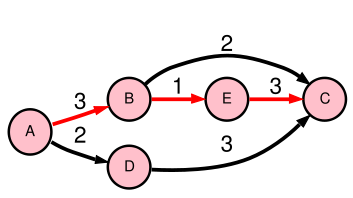What is PERT?
 What is PERT? (Part 3): In the previous article Three Point Estimate, we learned about the advantages of 3-point estimation. In this post, we’ll carry the concept forward and talk about a special type of three point estimation technique called Program Evaluation and Review Technique (PERT).
What is PERT? (Part 3): In the previous article Three Point Estimate, we learned about the advantages of 3-point estimation. In this post, we’ll carry the concept forward and talk about a special type of three point estimation technique called Program Evaluation and Review Technique (PERT).
Three Point Estimates are better than a Single Fixed Estimate
After reading the previous article, can I say that we agree that three point estimates are better than a single fixed estimate? There’s a very little probability of completing a project on any one given date. Three-point estimates use 3 different estimates - Optimistic (O), Most Likely (M) and Pessimistic (P) - to estimate project duration and cost. Rather than using a single estimate, three-point estimates use a range of estimates. The three estimates take into consideration the risk in the project and help project managers develop a more realistic schedule or budget. For the purpose of planning, a single estimate is derived from the three-point estimates.
What is simple average three point activity duration estimate?
As a project manager, I go around to project team members, collecting 3-point estimates for all the activities on the network diagram. But wait a minute, in order to calculate the critical path using the Critical Path Method (CPM), I need to get a single fixed time estimate for each activity on the network diagram. If you are familiar with CPM, you know that the critical path is the path with the longest duration in the network diagram, and each activity in the network diagram has a fixed estimate. Therefore, we need to somehow convert the 3-point estimates for each activity to a single estimate.
Let’s take the example of Activity Duration Estimate.
If you use a “simple” average estimate for a project, you would take a mean of all the 3 estimates i.e. add up all the 3 estimates and divide them by three.
Simple average Duration Estimate = (O + M + P) / 3
where O is the Optimistic estimate, M is the Most likely estimate, and P is the Pessimistic estimate.
What is PERT?
PERT stands for Program Evaluation and Review Technique. PERT was developed jointly by the U.S. Navy, Lockheed Martin, and the consulting firm of Booz, Allen and Hamilton working on the Polaris nuclear submarine project, in the 1950s. PERT is one of the most commonly used techniques used along with Critical Path Method (CPM) to estimate the minimum time needed to complete a project.
PERT and CPM are two common techniques used for project duration estimation.
PERT is a "weighted" average duration estimation technique
PERT combines probability theory and statistics to derive a formula for the average (mean) activity duration from the three point estimates. PERT uses 1-4-1 weightage i.e. it gives 4 times more weightage to the Most likely (M) estimate than the Optimistic and Pessimistic estimates. The formula for PERT estimate is:
PERT estimate = (O + 4M +P) / 6
Note: PERT estimate is also known as the Expected Activity Duration or EAD or simply Expected Duration.
Summary
PERT is a type of three-point estimation technique. PERT uses a “weighted” average estimate rather than a simple average. Three-point estimates are also used for Monte-Carlo Analysis. In this next post in this series, we’ll learn how the PERT formula is derived and the underlying assumptions behind it.
Suggested Reading: It Takes Three to Make Good Estimates by Oliver F. Lehmann
If you have any questions, please post them in the comments section below. I would be happy to help.
8-part series on Project Estimation and PERT
- Get Intimate with PERT
- Three Point Estimate - The Power of Three in Project Estimation
- What is PERT? (you are here)
- The Magical PERT Formula
- Probability and Statistics in Project Management
- PERT and CPM get Cozy
- PMP Quiz Contest - Activity Duration Estimates
- Standard Deviation and Project Duration Estimates
Image credit: Wikimedia Commons
13 Comments
Anonymous
Harwinder Singh
Anonymous
Harwinder Singh
Preetham
Harwinder Singh
Harwinder Singh
Anonymous
Harwinder Singh
Anonymous
Anonymous
Zafie
Harwinder Singh